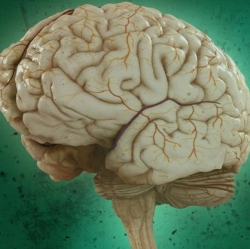
Researchers have discovered what two parts of the brain are saying to one another when processing vision. The research marks a huge ‘step up’ in interpreting brain activity, opening up opportunities such as studying what happens to the brain’s network as it ages or the effects of a stroke when brain processes are disrupted.
Philippe Schyns, professor of psychology at the university’s centre for cognitive neuroimaging, said: “With Enigma, we knew the Germans were communicating, but we didn’t know what they were saying. Just like if you’re walking down the street and you see two people talking in the distance: you know they are communicating with each other, but you don’t know what they are saying.
“Communication between brain regions has so far been like these examples: we know it’s happening, but we don’t know what it’s about. Through our research, we have been able to ‘break the code,’ so to speak, and therefore glean what two parts of the brain are saying to each other.”
The ground-breaking research, could, in the future, inform machine vision algorithms, by revealing the information and strategies that humans use when performing different challenging recognition tasks.
Professor Schyns added: “Through these discoveries, by knowing how to code and integrate these messages between different parts of the brain, we could one day give robots the same visual capabilities as people.”
To develop their technique, scientists used a picture of Salvador Dali’s Slave Market with the Disappearing Bust of Voltaire, focusing on the face of Voltaire and the images of the two nuns surreally embedded in typical Dali style within the image.
Dr Robin Ince, the lead author on the paper, explains: “By randomly showing different small sections of the image, we were able to see how each part of the image affected the recorded brain signals.”
The research will have valuable applications in other areas as well. Dr Ince adds: “Being able to measure the content of communication between brain regions is crucial for studying the detailed function of brain networks and how, for example, that changes with aging or disease.”
The study, entitled Tracing the Flow of Perceptual Features in an Algorithmic Brain Network, was published in Scientific Reports. It was funded by the Wellcome Trust, BBSRC and the Seventh Framework Programme for Research of the European Commission.
